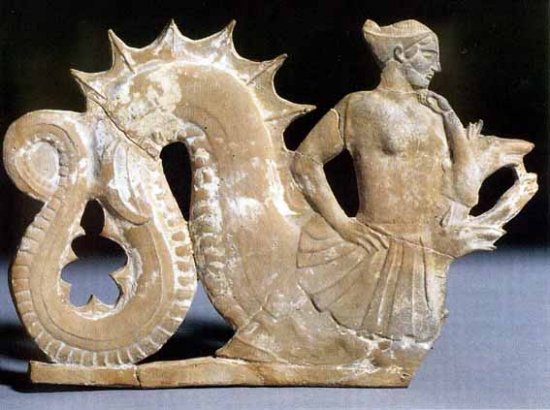Scylla
The six-headed monster that resided at the Strait of Messina.
Scylla (Σκύλλη) was originally a beautiful maiden who was loved by a minor sea god named Glaucus. The sorceress Circe was in love with Glaucus, but the sea god did not return her love. In a jealous rage, Circe poured one of her potions into the area where Scylla normally bathed. Scylla was transformed into a monster with six long necks, with the heads of ugly hounds.
According to Hyginus, Scylla was born a monster. She was an offspring of Typhon.
Scylla's lair was on the opposite side of the strait, where a giant whirlpool, the Charybdis (Χάρυβδις), brought complete destruction to any ship sailing nearby.
To escape both Scylla and Charybdis was virtually impossible. If the ship sailed near Scylla they would lose sailors, but sailing too close to Charybdis would destroy the entire ship.
However, the Argonauts did manage to pass through Scylla and Charybdis because of the sea goddess Thetis. Her husband Peleus was one of the Argonauts.
In the Odyssey, Odysseus lost six of his men to Scylla the first time his ship passed through the strait. A month later, Odysseus lost his entire ship and crew when the gods sent strong winds, driving his ship back to the strait. This time, Charybdis swallowed his ship. Odysseus was the only survivor.
The Christian saying, "between the devil and the deep blue sea," actually alluded to and originated from Scylla and Charybdis.
By Jimmy Joe



